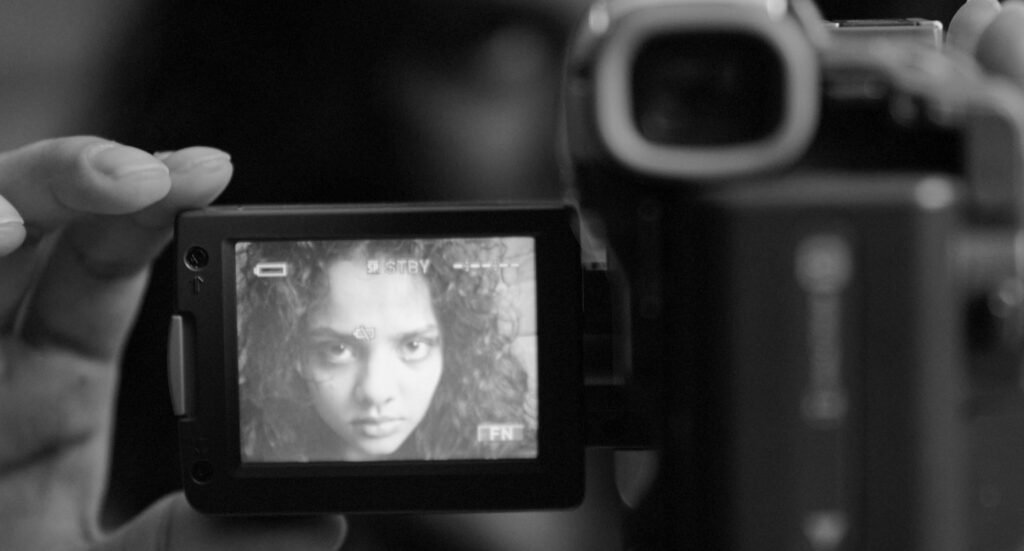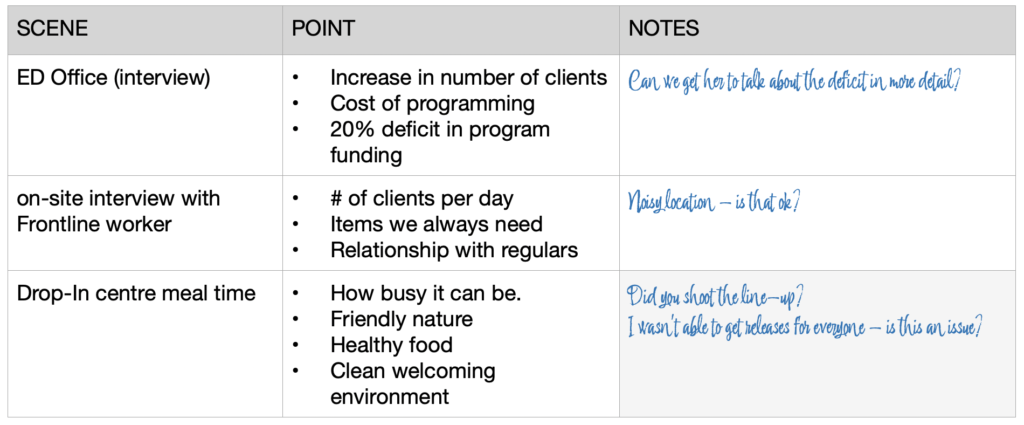What to expect, how to be a good client on set and get the most out of your producer.

Who’s on Camera?
Throughout pre-production your producer will be busy looking for locations, hiring the best crew the budget can afford, and developing the creative. As the crew comes on board the creative evolves. Motion picture is a very collaborative medium, and the camera/sound/art direction team will have ideas and suggestions. This doesn’t mean your producer is waffling, it means you are getting the best creative possible for the time and budget.
You should receive a production schedule. This will nail down the shooting dates and key deadlines in prep and post-production.
It is a good idea to know in advance who will appear on camera and have them sign the release form permitting you to use their likeness. Your producer will have templates they use for this. Technically it is the producer’s job to make sure release forms are signed. I often ask my client to do it as this way it can be done in advance, they have the relationships and that can be less intimidating when asked to sign a release form. It is a good idea to make sure the release form gives your organization the rights and not the production company.
A note on rights and licenses…
A note on rights and licenses. I operate on the principle that whoever pays for the production owns the footage. This should be stipulated in the ‘deal-memos’ – the crew contracts. There may be some exceptions. If you are paying a specialist like a drone operator for time and gear but not their full rate, the operator, the producer or the production company may want the option of reselling the footage on a stock site if the subject is appropriate. Be clear about rights upfront. You may be licensing music or stock footage, make sure this is licensed to you or if it is the producer, get a copy of the license so you know are covered and understand if and when it expires.
Though shooting can be exciting, it is best to limit the number of organization representatives on set, too many opinions can slow down production. Most if not all the creative decisions should be made by now, though it is good to stay open to ideas that arise while shooting.
What you, the client, needs on set
It is helpful for a client to have some tools on set. One of them is like a shot list, but it’s more of a purpose list. If you know the specific points you need in the video have a list that outlines what scene they will be covered in so you can check them off as they are shot. Make any notes here to cover off with your producer before you move on from shooting that scene, as you may forget by the time you are asked. Here is an example of what this may look like:

You will want to keep this list for post-production.
Brown Bag or Catering?
We have all seen the large sets with a fully catered craft-services area for lunches, breakfasts, and snacks. If you are a small to medium size non-profit this probably won’t be you – nor do you need it. All budgets and situations are different, but there are reasons to cover snacks and lunches if your budget can manage it. First and foremost it allows the producer to manage break times and keep the crew together, and it ensures that everyone on set is taken care of for their workday. Having a small table of healthy snacks, coffee and water is good for morale (tell everyone to bring water bottles, cups, and if you like cutlery to cut down on waste). My crews are typically under 10 people so I order from a close restaurant that has enough selection to accommodate various diets (gluten-free, vegan keto etc -for some reason, film has a disproportionate number of picky eaters I am one of them). This can also be an economical way of topping up low day rates – so trust your producer on their recommendation.
If your budget won’t stretch you can ask people to bring a bagged lunch, or let them know what options are available in the area and the price range they can expect. Your producer may also want to go this route if it means they can top up the crew day rate. Some people would prefer an extra $25 cash than a $15 lunch… it all depends on the budget.
How long is the shoot day?
Sometimes production days can be long. I try to keep my days to 8-10 hours, but the typical is 12-14 hours. It isn’t always because producers are sociopaths. Sometimes if you work an extra few hours it can mean you are saving a whole production day and thousands of dollars. It also depends on how many locations you have. Location moves are expensive as you are paying for crew and equipment but you aren’t shooting, they take valuable time, you need to load and unload the gear, and set up and tear down every time you change locations. For low-budget it is best to minimize where you shoot, Your producer should be planning the production to use as few crew as necessary.
The more organized the producer is before the shoot, the more enjoyable the production day is. The producer who taught me would say if I am doing anything on set, it is because I didn’t do the work in prep. Mind you she wasn’t directing all well…. Read Part 5: Post-production



No responses yet